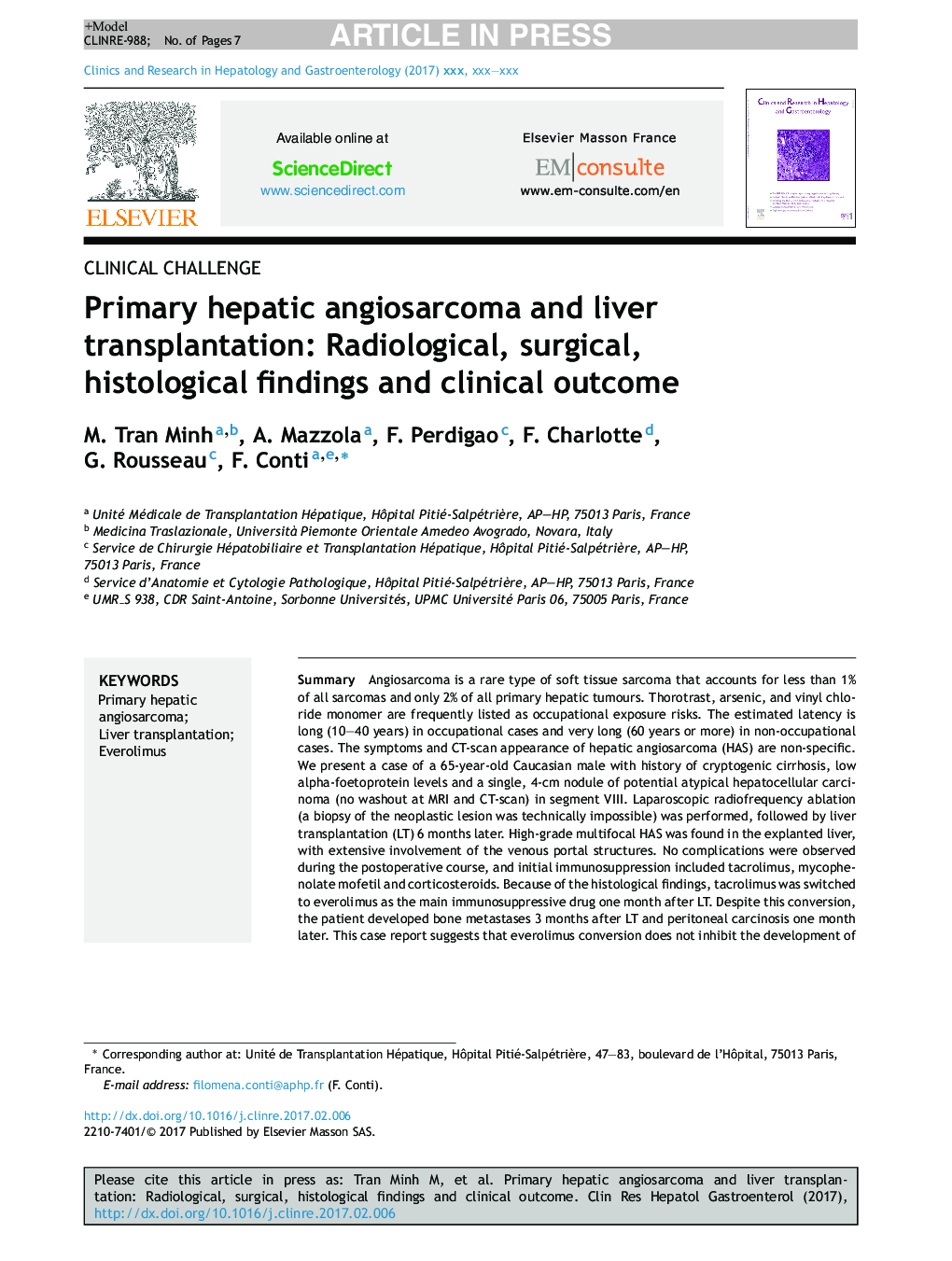| کد مقاله | کد نشریه | سال انتشار | مقاله انگلیسی | نسخه تمام متن |
|---|---|---|---|---|
| 8725465 | 1589921 | 2018 | 7 صفحه PDF | دانلود رایگان |
عنوان انگلیسی مقاله ISI
Primary hepatic angiosarcoma and liver transplantation: Radiological, surgical, histological findings and clinical outcome
ترجمه فارسی عنوان
آنژیوزارکوم اولیه کبدی و پیوند کبد: یافته های رادیولوژیک، جراحی، بافتی و نتایج بالینی
دانلود مقاله + سفارش ترجمه
دانلود مقاله ISI انگلیسی
رایگان برای ایرانیان
موضوعات مرتبط
علوم پزشکی و سلامت
پزشکی و دندانپزشکی
بیماریهای گوارشی
چکیده انگلیسی
Angiosarcoma is a rare type of soft tissue sarcoma that accounts for less than 1% of all sarcomas and only 2% of all primary hepatic tumours. Thorotrast, arsenic, and vinyl chloride monomer are frequently listed as occupational exposure risks. The estimated latency is long (10-40 years) in occupational cases and very long (60 years or more) in non-occupational cases. The symptoms and CT-scan appearance of hepatic angiosarcoma (HAS) are non-specific. We present a case of a 65-year-old Caucasian male with history of cryptogenic cirrhosis, low alpha-foetoprotein levels and a single, 4-cm nodule of potential atypical hepatocellular carcinoma (no washout at MRI and CT-scan) in segment VIII. Laparoscopic radiofrequency ablation (a biopsy of the neoplastic lesion was technically impossible) was performed, followed by liver transplantation (LT) 6 months later. High-grade multifocal HAS was found in the explanted liver, with extensive involvement of the venous portal structures. No complications were observed during the postoperative course, and initial immunosuppression included tacrolimus, mycophenolate mofetil and corticosteroids. Because of the histological findings, tacrolimus was switched to everolimus as the main immunosuppressive drug one month after LT. Despite this conversion, the patient developed bone metastases 3 months after LT and peritoneal carcinosis one month later. This case report suggests that everolimus conversion does not inhibit the development of tumour metastases. Consequently, HAS remains an absolute contraindication to LT because of the poor outcome. If LT has been performed for incidental HAS, new molecular therapies (e.g. vascular endothelial growth factor antagonists) should be considered immediately after LT to improve the outcome.
ناشر
Database: Elsevier - ScienceDirect (ساینس دایرکت)
Journal: Clinics and Research in Hepatology and Gastroenterology - Volume 42, Issue 1, February 2018, Pages 17-23
Journal: Clinics and Research in Hepatology and Gastroenterology - Volume 42, Issue 1, February 2018, Pages 17-23
نویسندگان
M. Tran Minh, A. Mazzola, F. Perdigao, F. Charlotte, G. Rousseau, F. Conti,
